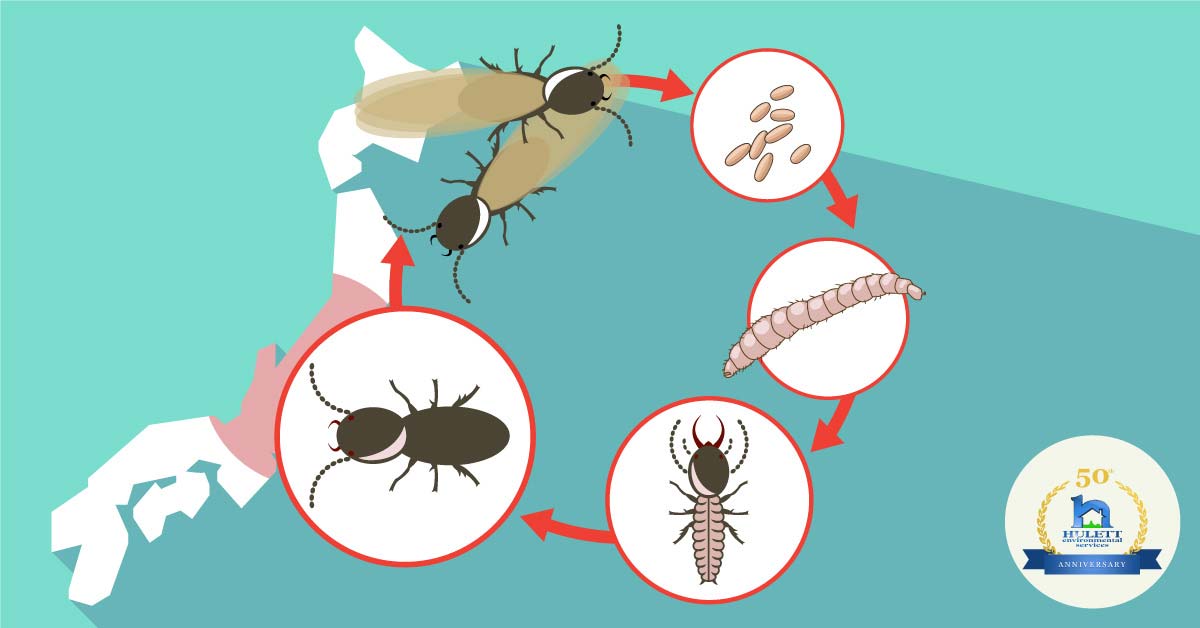
Recent Discovery: Female Termites Who Don’t Need Males to Reproduce
On September 24, 2018, media outlets reported the discovery of the first known naturally-occurring all female termite colonies in remote coastal areas of southern Japan. Published in the journal, BMC Biology, University of Sydney’s School of Life and Environmental Sciences biologist, Toshihisa Yashiro and his team reported that, while engaged in fieldwork in southern Japan, they happened upon several populations of Glyptotermes nakajimai termites that appeared to be “exclusively female.” Knowing that the only way these populations could sustain themselves would be through asexual reproduction, Yashiro and his team set out to prove their theory.
Hard to believe at first
Because termite populations generally consist of equal numbers of males and females, not unlike humans, animals, and other gender-equal societies, Yashiro explained, “Both males and females work equally to make the society function.” In most termite societies, females and males function as soldiers and workers and the males are important for reproduction. “Our paper is the first demonstration that termites can do away with males completely,” said Yashiro, “by the evolution of an asexual lineage, and get along fine just with females,” Newsweek reported.
A broad and thorough study showed geographic differences in termite populations
Proving their theory involved a study conducted over the course of one and a half years, where the team painstakingly examined thousands of tiny termites with barely distinguishable sexual characteristics from ten field sites across Japan’s mainland and a number of adjoining islands. The researchers discovered geographic differences in termite populations. On Japan’s largest and most populous island, Honshu, in addition to offshore islands, Amami-Oshima, Okinawa and Ogasawara, the equal gender percentages held fast but the researchers found that on the smaller two of Japan’s major islands, Shikoku and Kyushu, males were conspicuously absent.
Just to be sure the all-female colonies reproduced by asexual reproduction
Even though Yashiro’s team inspected “over 100 individuals from each of 74 separate colonies,” the defining evidence came from examining the pouches, called “spermathecae” where queens store sperm for their sole activity, reproduction. In the mixed-sex colonies these pouches contained a storehouse of semen, while in the all-female populations, these pouches were empty.
Unfertilized eggs in all-female colonies seal the deal
Delving deeper, researchers examined hundreds of eggs, finding that almost half of the eggs from mixed-sex populations were fertilized, while none of the eggs from the all-female colony had been inseminated. Still, the eggs from both colonies hatched at the same rate. Yashiro and his colleagues concluded that on Japan’s mainland, the southernmost regions appeared to only support thriving colonies of uncontacted virgin termites.
Why did exclusively female termite populations evolve?
If you’re asking why did these female-only populations evolve in the first place, you’re not alone. Yashiro’s project looked to sort this mystery out. Measuring the heads of the mixed-sex colonies and the all-female termite populations, the researchers found that the female-only members looked a great deal more alike than the mixed-sex termites, no surprise there. Because termites aren’t built to fight off intruders, with no special body armor to speak of, they often use their heads to plug the entrances to their nests. The more uniform the colony’s heads, the easier to defend themselves, Yashiro suspects. According to Smithsonianmag.com, “a variety of head sizes could actually be a burden rather than a boon, meaning the loss of males may have actually empowered these female fighters to survive an assault.”
Weighing in, the scientific community is impressed and excited about the findings
Insect sociobiologist and behavioral ecologist at Northeastern University, Rebeca Rosengaus, who wasn’t involved in the study described Yashiro and his colleagues’ work as thorough and very comprehensive. “That is completely new and exciting,” Rosengaus said, noting that no former study had shown “a complete elimination of males.”
In the big picture
Most termites are monogamous, mating for life during a nuptial flight, where they settle down and raise colonies of their own, divided into caste systems, like bees. While termite colonies can have male and female soldiers, the entire working population in bee societies are female, with a few stingless males and a reproductive king. Recently, some bees have been identified that hatch females from unfertilized eggs by doubling up on the mother’s chromosomes. This allows females to produce offspring from unfertilized eggs without the need for sperm. Now, it appears that termites can engage in similar, no sperm required, reproduction but unlike bee societies, termite colonies that eliminate males could completely turn the existing social structure on its head, evolving into new species of wood-eating machines.
Report indicates that males aren’t essential in animal societies
As Yashiro pointed out, “[It’s] dramatic that . . . males are not essential for the maintenance of animal societies in which they previously played an active social role.” Diversity may be the reason termite colonies haven’t “transitioned to chastity” at this point in their evolution. Termite populations with mixed male and female genes develop diversity in their colonies that facilitates the survival of colonies during extreme conditions and environmental changes. Further study will determine if all-female colonies can withstand microbial diseases and environmental disruptions in colonies. Back in South Florida, termites, especially invasive Asian and Formosan termites present an urgent and immediate concern. For the integrity of your home or business, contact Hulett to schedule a free termite inspection and get proactive support with Hulett’s annual termite protection plans. Protect your sanity and your home from termites. Just call Hulett!



